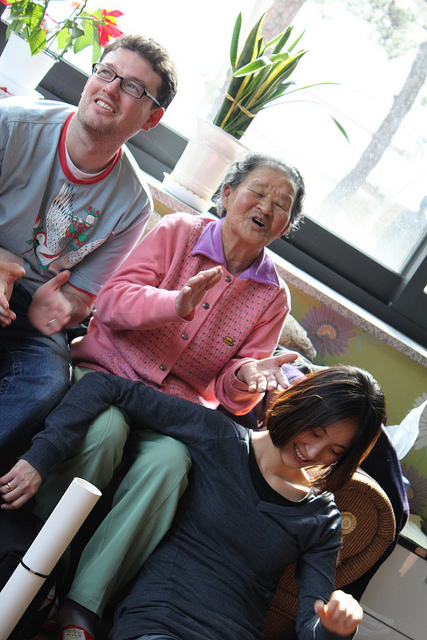A new blog about the comfort women issue
I’m working to get a separate blog up and running dedicated to sharing the research I do about the issue of comfort women and comfort stations. It’ll be called One Thousand Wednesdays. While I get things up and running, I’ll share my first posts here.
I can’t say when I learned for the first time about the issue of the comfort women, but I remember that I felt stunned.

It was 2009, and months after graduating from college in Minnesota I had moved to South Korea to teach English in a Seoul suburb. Somewhere in those early months I encountered the story of comfort stations and the girls who endured them. I simply could not comprehend that before and during World War II, thousands of girls across Asia had been coerced into sexual slavery by Imperial Japan. I couldn’t believe that this massive system of institutionalized rape had once been maintained at the highest levels of the Japanese Empire’s military and government. I couldn’t conceive that girls and young women had been presented to troops as an amenity whose bodies they were entitled to use and plunder for their own relief. And most of all, I couldn’t imagine the lived reality of those young girls and women who endured such inhumane violence day after day, without any idea if it would end.
I also recall that for a brief moment, I experienced disbelief—the impulsive rejection that something so unthinkably horrific could possibly be real.
That was a passing emotion, quickly replaced by curiosity. I wanted to understand how this horrible thing that happened, and why I knew nothing about it. Like investigating so many ugly and complex chapters of the past, the more I learned the more I saw that the existence of comfort women and comfort stations was all too real, and also not a thing of the past.
Thousands of women who survived comfort stations died before they ever saw justice, many before their experiences were recognized as criminal. But not all. Some are still alive. A few have dedicated their lives to fighting for justice. Everyday their numbers dwindle, as struggles for recognition and justice g0 on. Campaigns for truth and reconciliation persist as advocates try to tell the stories of people overlooked or silenced in the past. Governments and advocates grapple to determine what justice should look like, and how to both move forward and atone for past wrongs. And across the world people still try to understand what we can learn from the comfort woman to avoid a similar atrocity in the future. That means taking a hard look not just at issues of gender and sexuality, but also class, racism, and colonialism.
I left South Korea after a year of living there, but I returned, again and again, to the issue of the comfort woman.
In graduate school I dedicated my thesis to the topic, reading every relevant text I could find, and when that was done, broadening my definition of what had relevance. The result was a year-long fever dream of highlighted passages, late nights, and poor attempts to do too many things at once. Now the thesis has been submitted and archived, and I’ve emerged from the haze of graduate school more hungry than ever to understand the story of Imperial Japan’s Comfort Stations, of the women who endured them, and of the survivors and activists who continue to fight for justice today.
So now I’m going back to the drawing board, returning to all those old sources I read at a breakneck pace, but this time I’m going to wade through them slowly and thoroughly, and I’ll share what I learn as I go. Along the way I’ll catalogue news updates, share photos, and try to make sense of things I find confusing. Interested? Feel free to follow along.
Leave a Reply